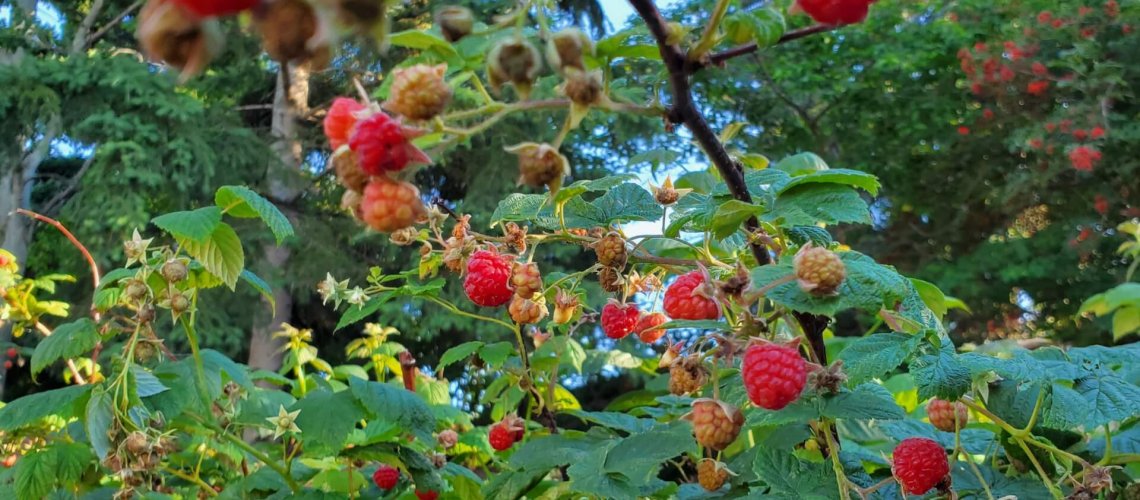Nature delights the soul. One of my most memorable moments in gardening was watching 500 or more cedar waxwings landing in my yard to strip mountain ash berries from my tree. Obviously the tree couldn’t handle all 500; they took turns in groups of 50 or so landing on the tree, eating their share, then leaving for the next group.
The song of the Robin in early spring, the cheery melody of the Chickadee, or the rap-rap-rap of a Pileated Wood Pecker is as entertaining as my favorite music. Of course, the raucous cacophony of Magpies reminds me of music I dislike.
In our back yard, we have seen over 20 species of birds. In addition to the ones mentioned in this article, we have also seen Crossbills, Warblers White-Crowned Sparrows, White Throat Sparrows, and a variety of Warblers.
Unfortunately, with the continued use of herbicides and pesticides, especially Neonicotinoids, a broad-spectrum pesticide there are far fewer insects available to feed insect loving birds, especially songbirds (refer to Wikipedia re Neonicotinoids.) I am sure many of you have noticed a dramatic decline in songbirds over the past 20 years. You must also have noticed a dramatic decline in insects on your windshield when driving in the summer.
In the city, the probable cause is the desire for lush lawns that are weed-free. The various companies that service your lawn use a variety of herbicides and pesticides to keep the lawn looking as perfect as a bride on her wedding day. But they kill valuable food for the birds.
What can one person do? You can help provide a refuge for birds in his or her own yard. Avoid chemicals on your lawn and other parts of your yard. Provide food for the birds by planting trees and shrubs that provide berries and insects for the birds.
And put up one or more birdhouses. One amazing Wren set up housekeeping in one of our birdhouses. It had a twig that was three times as long as the diameter of the hole into the birdhouse. Three times it tried to put it in directly, but the hole was too small. Then it twisted its head and poked it in lengthwise. Smart bird!
And don’t forget the birdbath. Water attracts birds to drink and bathe. Remember to keep the water clean, changing it frequently.
So, plan your yard or balcony to attract birds. No matter how small your space, you can add flowers, a birdbath, and small shrubs. Bright flowers attract hummingbirds. Shrubs such as cotoneaster, dogwood, blueberry or saskatoon provide fresh fruit for Robins, Grosbeaks, Blue Jays, and Wrens. Flowers that produce seeds such as black-eyed Susan, coneflower, sunflower, cosmos, or bachelor button, attract seed-eating birds such as the Nuthatch, Finch, American Goldfinch, Chickadee, or Sparrow.
In the winter stock your bird feeder with their favorite food. Like people, different birds prefer different food. And so, provide different bird feeders. Sunflower seeds are preferred by Chickadees, Nuthatches, Crossbills, and Jays. Chickadees, Jays, and Woodpeckers like peanuts. Suet attracts Nuthatches and Woodpeckers. Sparrows and Finches prefer birdseed.
And in the summer, don’t forget the hummingbird feeder.
With a little planning, you can make your backyard a haven for birds, providing you with many hours of pleasure, watching nature’s beauties.
For detailed information on bird feeders bird food, and garden flowers and shrubs, refer to the magazine, Backyard Birding, or Garden Secrets for Attracting Birds by Rachael Lanicci.
To read my other articles, go to my webpage at www.learningbygrowing.com

Recent Comments